Hedge Funds: An Analytic Perspective
$19.48
| Author(s) | |
|---|---|
| Format |
|
| Pages |
387 |
| Publication Year |
2010 |
Hedge Funds: An Analytic Perspective provides a useful and very timely overview of key aspects of the hedge fund industry. It summarizes the basic properties of hedge fund returns, discusses why traditional performance measures may be misleading when analyzing hedge fund performance, and highlights important issues such as serial correlation, return smoothing, and illiquidity.
Introduction:
One of the fastest growing sectors of the financial services industry is the hedge fund or alternative-investments sector, currently estimated at more than $1 trillion in assets worldwide. One of the main reasons for such interest is the performance characteristics of hedge funds—often known as “high-octane” investments: Many hedge funds have yielded double-digit returns for their investors and, in many cases, in a fashion that seems uncorrelated with general market swings and with relatively low volatility.
Most hedge funds accomplish this by maintaining both long and short positions in securities—hence the term “hedge” fund—which, in principle, gives investors an opportunity to profit from both positive and negative information while at the same time providing some degree of “market neutrality” because of the simultaneous long and short positions. Long the province of foundations, family offices, and high-net-worth investors, alternative investments are now attracting major institutional investors such as large state and corporate pension funds, insurance companies, and university endowments, and efforts are underway to make hedge fund investments available to individual investors through more traditional mutual fund investment vehicles.
However, many institutional investors are not yet convinced that alternative investments comprise a distinct asset class, i.e., a collection of investments with a reasonably homogeneous set of characteristics that are stable over time. Unlike equities, fixed income instruments, and real estate—asset classes each defined by a common set of legal, institutional, and statistical properties—alternative investments is a mongrel categorization that includes private equity, risk arbitrage, commodity futures, convertible bond arbitrage, emerging-market equities, statistical arbitrage, foreign currency speculation, and many other strategies, securities, and styles. Therefore, the need for a set of portfolio analytics and risk management protocols specifically designed for alternative investments has never been more pressing.
Part of the gap between institutional investors and hedge fund managers is due to differences in investment mandate, regulatory oversight, and business culture between the two groups, yielding very different perspectives on what a good investment process should look like. For example, a typical hedge fund manager’s perspective can be characterized by the following statements:
- The manager is the best judge of the appropriate risk/reward trade-off of the portfolio and should be given broad discretion in making investment decisions.
- Trading strategies are highly proprietary and therefore must be jealously guarded lest they be reverse-engineered and copied by others.
- Return is the ultimate and, in most cases, the only objective.
- Risk management is not central to the success of a hedge fund.
- Regulatory constraints and compliance issues are generally a drag on performance; the whole point of a hedge fund is to avoid these issues.
- There is little intellectual property involved in the fund; the general partner is the fund.
Contents:
- Basic Properties of Hedge Fund Returns
- Serial Correlation, Smoothed Returns, and Illiquidity
- Optimal Liquidity
- Hedge Fund Beta Replication
- A New Measure of Active Investment Management
- Hedge Funds and Systemic Risk
- An Integrated Hedge Fund Investment Process
- Practical Considerations
- What Happened to the Quants in August 2007?
- Jumping the Gates
Hedge Funds: An Analytic Perspective By Andrew Lo pdf
11 reviews for Hedge Funds: An Analytic Perspective
Clear filtersOnly logged in customers who have purchased this product may leave a review.

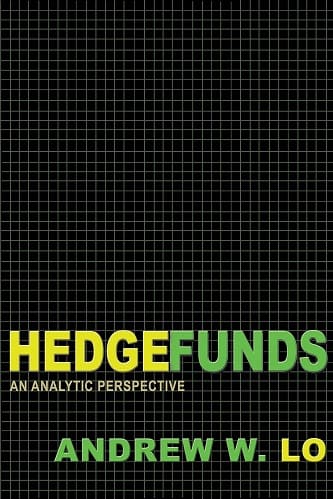
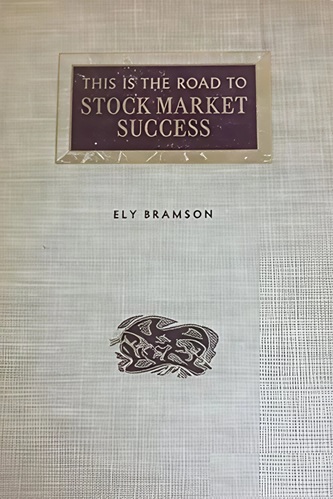

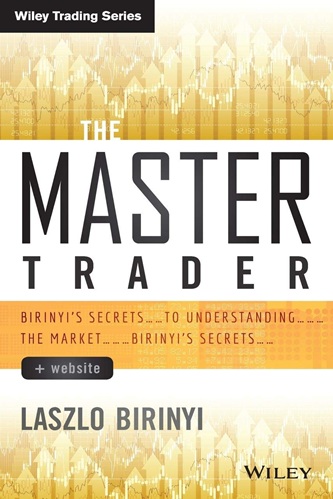


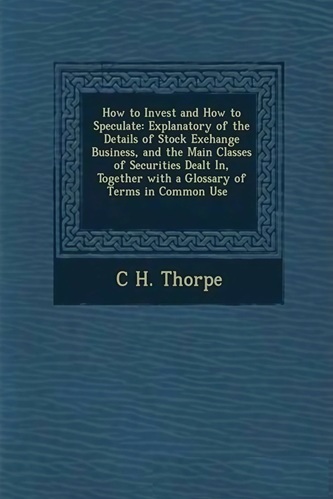
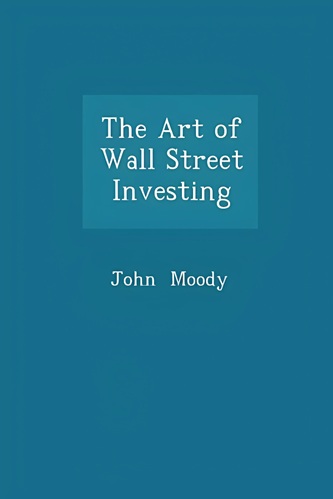

Chaim Neal (verified owner) –
The recent financial “crisis” has many pointing to hedge funds as being one of the many culprits in bringing about the “freeze-up” in credit, along with ordinary banks and insurance providers. In spite of their being around for many decades, hedge funds still seem mysterious to many, and this has caused many to view them with (unjustified) suspicion. Even financial modelers and analysts who work in areas outside of hedge funds sometimes view them this way.
This book is written for the latter class of readers. The author, a respected researcher in his own right and one who many readers may find familiar because of his earlier book “A Non-Random Walk Down Wall Street”, gives a fairly detailed introduction to some of the quantitative analysis behind hedge funds. The mathematical formalism used in the book should be familiar to the typical financial engineer, but some of the emphasis, particularly on serial correlations, may be surprising to those analysts who have not had to deal with it in practice.
But the author views serial correlation as being one of the most important characteristics of hedge fund returns, and he gives a fair amount of empirical evidence for his assertion early in the book. He makes it clear however that the presence of serial correlation does not necessarily invalidate the random walk hypothesis (i.e. the presence of predictability in returns), but instead is manifested in the presence of illiquid securities in the hedge fund. Serial correlation thus becomes a proxy for the liquidity exposure of a hedge fund. The author also takes into account the fact that `performance smoothing’ may be responsible for serial correlation in the reported returns of hedge funds. A linear single-factor model, the details of which are discussed in chapter three of the book, is used to model these possibilities.
For those readers such as this reviewer who are strong advocates of complete automation of trading in the financial markets, chapter ten of this book should be of great interest. It gives in the author’s words a tentative explanation for some of the peculiar events that were happening last year at this time in some of the “quant funds”, particularly those that deployed what have been called `statistical arbitrage strategies.” What is valuable about the author’s discussion in this chapter is that he is honest enough to admit his explanations are tentative, and he avoids the hype of the popular and financial presses at the time. One headline in particular made the point that complex mathematical formulas “failed” Wall Street while another spoke of the “miscalculations” of Wall Street’s “math brains.” There is no doubt that the events of August 6-10, 2007 surprised many, including some of the managers and modelers of these quant funds, but others believe, correctly, that such large sways in losses should be viewed as part of the dynamics of the financial markets of the twenty-first century. Events like those in August 2007 will just be something traders will have to get used to, until the full automation of the financial markets can be completed, after which any anxieties will arise from those whose fortunes may be depleted from the trading strategies of the machines participating in this automation.
The author does not say much about automation in this article, except to give justified praise to those mathematicians, programmers, and managers who worked together to bring about automated trading platforms. Instead the author wants to enlighten readers who may not have in-depth knowledge of `long/short equity” strategies and their role in the events of August 2007. The mathematics is kept at a fairly elementary level, with most of the space in the chapter devoted to narrative explanations rather than mathematical formalism. The author delegates more of the mathematical details to the appendices. All of discussion in this chapter is fascinating, especially the comparisons of the August 2007 events to those in the Long Term Capital Management debacle in 1998. The latter has been used as a kind of benchmark for the modeling of extreme events in the financial markets, and how tightly coupled different sectors of these markets can be. The author alludes to this coupling in his `unwinding hypothesis’, wherein the rapid unwinding of any equity portfolio can affect all other quantitative strategies (so-called “common factor exposures”). The obstruction to validating his hypothesis is the proprietary nature of hedge funds, with each one guarding their own algorithmic secrets passionately, but yet who endeavor always to “reverse engineer” the others.
It is this lack of data and the asserted entanglement between different hedge funds that causes the author to discuss a very interesting tool in the mathematical modeling of creditor and illiquidity risk in hedge funds: the mathematical theory of networks. This reviewer, who has in times past worked in network modeling for several years, finds this an exciting development, and further proof of the interdisciplinary nature of today’s modeling efforts. Of course when one is modeling networks one is usually given the network topology and then endeavors to understand the information flow across the different devices (or nodes) in the network. However, when applying networks to the hedge fund industry one does not have information on the network topology due to the lack of transparency. The author of course realizes this and corrects for it by calculating the absolute values of the correlations between the hedge fund indexes over time. This gives him a notion of the “degree of connectedness” in the hedge fund industry, and he gives some (pictorial) examples. Simulations using artificially generated data from Monte Carlo simulations may be of assistance here in studying the degree of connectedness, in lieu of real data from the hedge funds themselves (which may not be farfetched given the regulatory threats hedge funds now face).
Since the author is heavily involved in the analysis of hedge funds it is natural to expect him to devote some space in the book to addressing the question as to whether the quant funds did indeed fail. In this regard he views the events of August 2007 as reflecting the liquidation of portfolios that were constructed using quantitative methods. The strength of quantitative methods remains to be tested, and also successful risk strategies must be devised that reflect the large deviation events that might occur in hedge funds.
This review is based on a reading of four chapters of the book.
Khalid Ayers (verified owner) –
Andrew W. Lo is a professor of financial mathematics at the renowned MIT. A gifted empiricist and innovative researcher. He is the author of the classic . The title of this book suggests that it has no problem breaking the classic assumptions of sometimes somewhat bored financial mathematics (EMH, etc.). Very refreshing guy.
The topic of the book is actually quickly summarized: can you replicate the performance of hedge funds with (sometimes quite simple strategies)? Lo means yes! How is your performance to be assessed? How is the investment in hedge funds to be managed? This question is quite interesting because hedge funds, no matter how different they may be otherwise, have two things in common. First, they’re not exactly liquid (you can’t withdraw your money from the find at any time), and secondly, they’re quite secretive. No one knows exactly what essentially unregulated hedge funds do with their clients’ money. How can you manage something whose risk/return profile you know so little about?
LO’s book lays the theoretical foundation for answering these questions here. The beauty of the book is that empirics are in the foreground. A look at the table of contents is quite informative, because the chapters really say what the corresponding chapter title suggests. For me, the book was worth it because of chapters 2, 3, 4 and 6. For most, Chapter 5, replicating the hedge fund beta, will probably be the most interesting part. In my opinion, Chapter 7 (Hedge Funds and Systemic Risks) also gives an indication of where the dangers in the hedge fund industry will also lie in the future.
The book is clearly laid out and has many informative and informative tables and graphics. Financial markets empirics at its best!
Why only four stars. The somewhat educated reader can also get the most interesting things from the book from Lo’s papers and his academic environment. And it’s free. Nevertheless, the book is naturally clearer!
Warning: not a book for newcomers, or most investors looking for information about investment opportunities/risks of hedge funds. A little too abstract for that.
greeting A Non-random Walk Down Wall Street Since Dr. Christian Donninger’s review has unfortunately disappeared, I feel obliged to give the book a rating 🙂
Willow Booth (verified owner) –
Excellent book written by a very well qualified and globally-known scholar. Must read!
Simone Burns (verified owner) –
I have to admit I was a bit disappointed by this book on Hedge Funds. While it does a good job at analyzing HF returns in the past and gives a decent explanation of what happened with HFs in 2007, don’t expect to find any insights into the strategies implemented by hedge funds.
Halle Clayton (verified owner) –
Andrew W. Lo ist wohl der geistige Führer der quantitativen Finanzmarktlehre. Vieles lässt sich auf andere Assetklassen adaptieren und erweitert den Horizont.
Renata David (verified owner) –
Let me start by saying that for someone wanting to learn about hedge funds, this book will still give you a decent amount of knowledge and a lot of empirical results. In fairness, the author has done a good amount of research on the subject, but I did not get the sense of a compelling consensus that these results are robust. What this book is good for is to gain an understanding of the databases that provide useful hedge fund information. So if you want to conduct your own empirical studies, yo will know where to go. This book does not seem to be as exceptional as the author’s other books (e.g. Econometrics of Financial Markets).
Talia Hampton (verified owner) –
Great book!
Great information with great detail about the process.
Detailed definition of the words associated with every step of the hedge fund process.
Alonso Medrano (verified owner) –
While I did appreciate the dialog describing the August 2007 failure I didn’t purchase the book for its interpretation of history.
The rear cover assured me this book was “the high water mark in the analysis of hedge funds for years to come”. To the contrary, I felt it did not even offer relevant exposure to current practices relevant to hedge funds and quants. To be fair, this 2007 publication is now three years old. The treatment of illiquidity and optimal liquidity was interesting, but stopped short after presenting the theory. IMO, practical implementation concerns and concrete examples set apart the quality texts and I just didn’t see that with this book.
Hank Nielsen (verified owner) –
An extrem Compact and reliable Source for all kind (Financial) Investors. To hedge Risk is more important than ever. It covers all parts and is extrem well wrtien! Easy to understand,
.
Andrew W. Lo needs no introduction if you are working in the Financial Indutsry 🙂
I love princeton Books, some of them are not that easy to read/understand, but they are extremly well Researched
Boston Mitchell (verified owner) –
A comprehensive and well-evidenced good starter for hedge fund research
August Orozco (verified owner) –
This is a thorough analysis of a number of different hedge fund strategies and a preview of the topics likely to be heavily discussed by hedge fund managers, pension plans as they move into the space, consultants advising plans, and fund of funds players.
Puts alot of meat on the bones of many issues those in the hedge fund business are currently discussing and grappling with in order to refine their business processes.
Very well researched and well written. Good analysis of the debacle of quant funds in 2007.